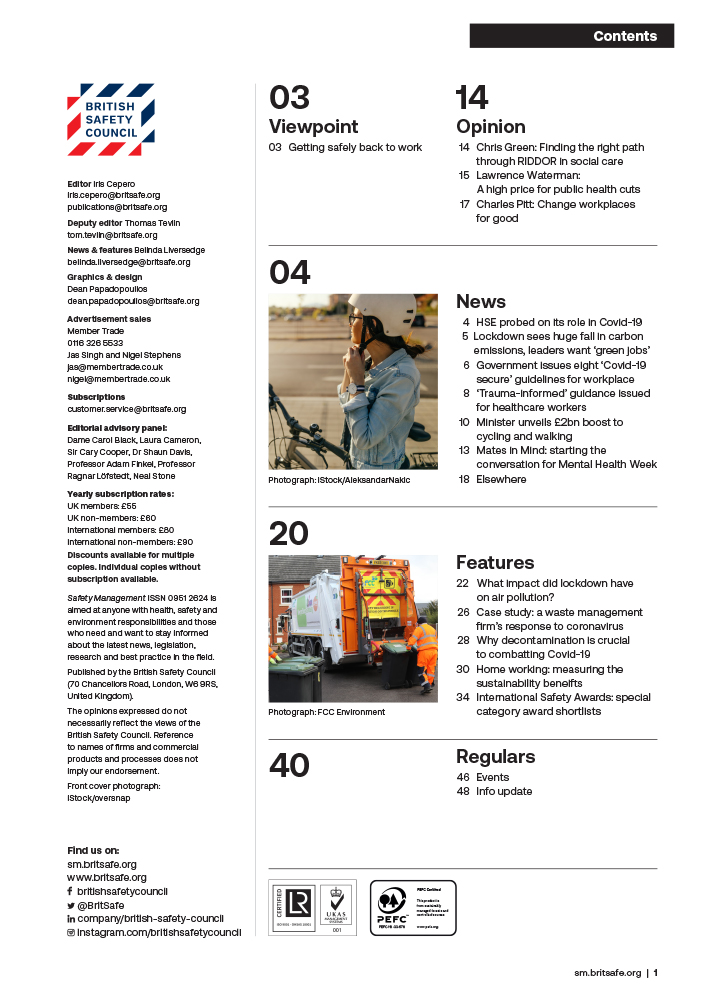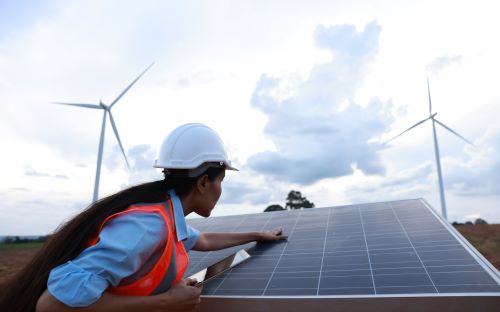Safety Management asked Dharmesh Shah how India can improve its waste management, through the ‘reduce, reuse, recover and recycle’ waste management model.
Features
What a waste
India is facing a huge challenge in managing the waste it produces as a society.
According to a 2016 estimate from the World Bank (bit.ly/3pPFq6h), the country produces a mammoth 277 million tonnes of solid municipal waste every year, from sources such as people’s homes and businesses.
The World Bank estimates that 77 per cent of this waste is simply disposed through open dumping – such as in unregulated landfill sites – where it both contributes to climate change through the generation of methane gas and pollutes the soil and groundwater, posing a risk to human and animal health. Significant amounts of waste are also disposed of by burning, increasing the risk of respiratory problems caused by people inhaling harmful airborne particles.
According to the World Bank, just five per cent of India’s solid municipal waste is recycled, and 18 per cent is composted.
However, the World Bank also warns that rapid population growth, urbanisation and economic development mean the amount of solid municipal waste produced by India will almost double over the next 30 years, from an estimated 277 million tonnes in 2016 to 543 million tonnes in 2050.
The World Bank warns that good waste management systems are “critical for sustainable, healthy, and inclusive cities and communities”. It is therefore urging all governments around the world to develop smart and sustainable ways of managing waste to minimise harm to human health and the environment.
Safety Management asked an expert for his views on how India can improve its waste management, through the ‘reduce, reuse, recover and recycle’ waste management model.
We spoke to Dharmesh Shah, a public policy researcher who is also a senior technical advisor for the Delhi-based Lawyers Initiative for Environment and Forests. Dharmesh also advises the Global Alliance for Incinerator Alternatives on international waste policy and the Chennai-based Community Environmental Monitoring programme on toxics, air pollution and health.
 Dharmesh Shah is a public policy researcher who is also a senior technical advisor for the Delhi-based Lawyers Initiative for Environment and Forests.
Dharmesh Shah is a public policy researcher who is also a senior technical advisor for the Delhi-based Lawyers Initiative for Environment and Forests.
How much waste is produced by Indian businesses and households, and has the amount been increasing or decreasing in recent years?
Dharmesh: According to the data in the public domain by the Central Pollution Control Board, Indian households generate 55–65 million tons of waste per year. There is no definitive data source for waste generated by businesses in the country. India’s waste generation has been increasing in recent years.
What progress is India making in minimising, managing and recovering or recycling the waste produced by its businesses and households?
Dharmesh: India’s efforts at minimising waste have been limited to imposing bans on certain kinds of low-value plastics, like bags, and PET (polyethylene terephthalate) bottles. The recycling efforts that exist are primarily due to an extensive network of informal waste workers, whereas formal recycling efforts remain negligible.
Waste management contracts in big cities are mostly aimed at collection and disposal at designated dumps, with little focus on minimisation or diversion for recycling or recovery.
One of the most considerable areas is organic waste, namely biodegradable food and green waste. All of this is disposed onto open dumps instead of composting or biogas where it rots creating all kinds of environmental problems.
Which types of waste pose the biggest problem in India? What can be done to reduce the main types of waste that are produced?
Dharmesh: Organic waste is the most significant problem followed by plastics. The solution is very simple when it comes to organic waste; we just need to collect it separately and divert it to composting or biogas facilities.
Cities and towns need to invest in creating an appropriate infrastructure for this purpose. The story is different with plastics; they are very hard to dispose safely and cause pollution, whether they are burned, buried or converted into products like oil or other plastics through recycling.
Are the existing waste laws and regulations adequate to ensure the correct management of waste?
Dharmesh: The laws we have now – the Municipal Solid Waste Management (MSW) and Plastic Waste Management (PWM) 2016 – are good first steps towards more progressive legislation in the future.
Needless to say, policy making around such complex issues is never easy and these rules have their flaws. For example, the inclusion of waste to energy incineration as a management approach has sent the wrong signal to the local bodies who are now sanctioning crores towards such projects.
Cities like Delhi have diverted huge resources towards incinerators instead of creating pre-treatment infrastructure for the separation of waste streams. Now we have a situation where the waste problem remains unchanged, and waste incinerators – and the toxic incinerator ash that is disposed on to open dumps – are contributing to the city’s air pollution crisis.
What steps should the Indian government take to minimise the amount of waste produced by businesses and households?
Dharmesh: The very first step would be to strictly implement the Solid Waste Management Rules 2016 and the Plastic Waste Management Rules 2016. These laws are a good first step in streamlining the task of waste management.
The Solid Waste Management Rules recommend the separation of waste at source and decentralised management of waste streams. This approach is the only way for a country like India to make any sustainable progress in the area of waste management.
Are Indian businesses making any progress in reducing the amount of waste they produce? Are they making any progress in recovering value from their waste and recycling their waste?
Dharmesh: In my view, industry is doing very little to address the issue. All the efforts I have reviewed so far are cosmetic and do not offer anything substantial.
To put that in perspective, the Indian plastic manufacturing sector increased its capacity by 1700 KTA (kilotons per annum) in 2019-20. You might argue that this is industrial progress, but from a waste management point of view, this is waste.
A major portion of India’s plastic is diverted towards packaging applications, which means single-use packaging that ends up as waste within a year.
The industry needs a radical transformation in terms of its product delivery systems. They can no longer justify selling shampoo, detergent etc, in single-use sachets or for that matter those 100ml bottles or Tetra Paks used to serve two mouthfuls of beverages.
What steps should businesses be taking to help India reduce its waste and move to a circular economy?
Dharmesh: Reduce, reduce, reduce! There is no other way out of the plastic crisis. Waste reduction is at the heart of circular economics. The current system encourages wasteful practices. In fact, profits are linked to consumption and the only way to make people consume more is by keeping the prices low and how do you keep costs low – by making products with shorter life spans.
The classic example is electronics. They are cheap, break soon and if they don’t then a new model is released every year with a slight variation forcing consumers to abandon healthy devices.
I also see businesses promoting destructive and toxic technology like waste incineration, pyrolysis and using plastic for roads under the banner of the circular economy. This is linear thinking; it destroys resources, but circular economics is about conserving resources.
Businesses need to overhaul their business models to incorporate circularity. The circular economy cannot be retrofitted, certainly not into a flawed system.


FEATURES

India’s path to net zero: a work in progress
By Orchie Bandyopadhyay on 08 April 2025
India is implementing a variety of clean energy measures to hit its target of net zero greenhouse gas emissions by 2070, including plans to rapidly scale up the generation of nuclear power. However, climate experts say significant finance will be required from developed countries to phase out coal power, accelerate renewables deployment and expand the national electricity grid.

Too hot to handle: early arrival of heatwaves in India sparks calls for action to protect workers and the public
By Orchie Bandyopadhyay on 08 April 2025
Temperatures in India in February 2025 were the hottest since records began over a century ago, prompting warnings the country needs to urgently step up efforts to protect both workers and the general population from the health risks posed by extreme heat and humidity.

